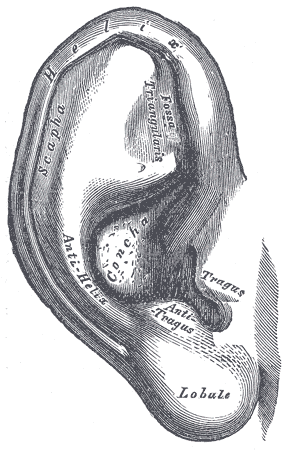Concha (singular, rhymes with "tonka"; the plural, conchae, rhymes with "donkey") comes directly from the Latin word for shell, concha. The word was first used in human anatomy by the Greeks and Romans for various concavities reminiscent of the inside of an oyster shell. An example that survives is the concha of the external ear.
The most common use of term today is for the three pairs of turbinates in the nasal cavity, the superior, middle, and inferior nasal conchae. This usage was coined by Julius Casserius Placentinus, a 16th century Italian anatomist at the University of Padua who was inspired, not by Mediterranean oysters, but by the unusual (for Europeans) Caribbean conch shells brought back by Italian explorers of the new world. The nasal turbinates have a scrolled appearance somewhat like a conch.
 An oyster opened up. www.fisheries.vims.edu |
 The concha of the external ear. Grey's Anatomy via Wikipedia |
 West Indian Fighting Conch (Strombus pugilis). www.gastropods.com |

No comments:
Post a Comment